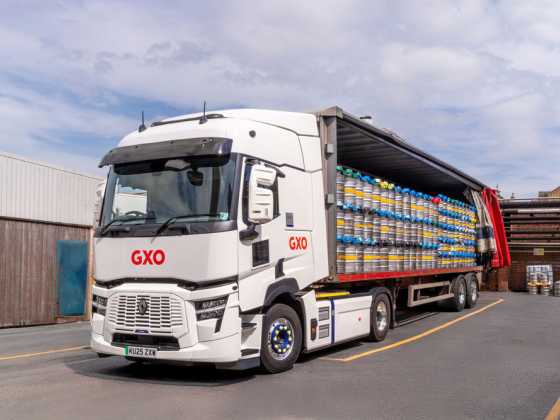Greening staff commutes and business travel

Commuting is responsible for five per cent of the UK's total carbon emissions. Add business travel to this and the figure gets much higher. Having a green travel plan is therefore a must for any organisation. Silviya Barrett, director of policy and campaigns at Campaign for Better Transport, explains how to get started
Whether you run a Sunday market stall or a multinational bank, transport is a vital part of any business. By putting in place a green travel plan to help staff travel more sustainably, organisations can curb emissions, cut costs and improve staff wellbeing. Sustainable modes like public transport, walking and cycling may not be suitable for 100 per cent of journeys, but many businesses find a significant proportion of journeys can be shifted, offering huge opportunities for growth.
From increasing the pool of labour and retaining talent, to improving employee wellbeing, there’s a lot to be gained from implementing a green travel plan for your organisation. Take the 77 per cent of UK jobseekers who, for example, do not have access to a car, good public transport access and promoting lift sharing can play a very important role in attracting a more diverse workforce, encouraging better equality of opportunity.
Green travel plans benefit both employer and employee. Last year we at Campaign for Better Transport created a Business Toolkit designed to help organisations – small or large, private companies or public sector – adopt greener transport options and become more efficient and environmentally responsible as a result.
So where to begin?
To work out what you’d like to achieve, it’s important to understand where you’re starting from. We recommend taking the following steps: First, take a business travel ‘health check’. This includes looking at policy. Do you already have a travel policy in place? Do you measure ESG (Environmental, Social and Governance) impacts?
Then conduct an employee survey to find out where your employees travel from, how they travel, and what any obstacles might be to encouraging more sustainable travel practices.
Calculate the carbon footprint of your business travel using a simple calculator such as that provided by Sustainable Travel International or Mobilityways’ Commuter Emissions Calculator.
Then you can start to assess the options, such as transport links. What are the local public transport links like? Is your place of work accessible by train, tram or bus?
Review the measures in Campaign for Better Transport’s business travel toolkit to decide whether they might work for your business and what their potential impact might be.
Having calculated your current footprint, set a carbon reduction target to reduce your impact over a year.
Also look at what proportion of journeys can be substituted by sustainable transport options?
After this initial work, implement the measures you decided upon and assess
their impact. Have you met your targets? Tweak or add more measures, if needed.
Commuting challenges
Commuting is responsible for five per cent of the UK’s total carbon emissions. By helping employees to travel more sustainably, businesses can help bring about the change we desperately need to see if we’re to avoid the worst effects of climate change. By gaining insight into commuting challenges, companies can then implement some of the following changes, including replacing company cars with car clubs and lift sharing.
Employees commuting by car can create massive parking pressures for organisations, in addition to the emission impacts. Car clubs and lift sharing schemes have been proven as effective ways for employers to combat both, with each UK car club car removing 20 private cars from the road. Car clubs provide hire vehicles by the day or by the hour, giving individuals access to a car without being tied to ownership. All costs including fuel, insurance and maintenance are included in the hire price, and many clubs offer bespoke provision for employers. Lift sharing can be facilitated through platforms like liftshare.com. Research by the company shows lift share commuters can save over £1,000 a year and, while 10 per cent of workers currently share a lift to work, 95 per cent could, which would save 35 per cent of all commuter emissions.
Provide a shuttle bus
For larger organisations, providing a dedicate shuttle bus is a practical option. Bespoke routes can be created to provide a full home-to-work service, or collect employees from a local train station, bus stop or park and ride facility. Companies can organise their own vehicles and drivers or they could work with providers like Zeelo to organise provision. A company shuttle bus reduces employees’ travel costs and improves punctuality.
Introduce a Cycle to Work Scheme
Cycle to work schemes have become a standard perk of workplaces, and for good reason: 54 per cent of people who cycle to work feel happy and energised during their commute – more than any other mode! Through the salary sacrifice scheme, operated by accredited providers, employees can purchase bikes from a range of retailers with the cost taken out of their pre-tax salary directly through their payroll. To further encourage active commuting, employers should provide facilities such as secure bike storage and changing rooms with showers.
Update your business travel policy
It’s not just the commute that can be ‘greened up’, travel for business meetings and events come with their own carbon footprints. According to the Travel Smart Campaign, which aims to curb corporate air travel emissions, business travellers make up some 12 per cent of passengers, but up to 75 per cent of revenues on certain flights. While many assume that flying is faster and cheaper, travelling by train can often be the most productive and cost-effective choice for business purposes within the UK. For companies serious about reducing their carbon emissions, adopting a business travel policy whereby rail is the preferred mode where available, is a simple way to cut emissions. See our travel policy for a best-practice example.
Elsewhere, facilitating homeworking arrangements can significantly reduce commuting emissions and even wider operational costs with less need for office space to accommodate a full staff five days a week. Flexible working arrangements can mean people are more likely to be able to travel off-peak, saving on rail travel costs.
Creating green travel plans can not only help your organisation to slash emissions, but many of the above suggestions will also improve employee health and wellbeing as well as making your business more attractive to new talent. Campaign for Better Transport’s Business Toolkit is packed full of inspirational case studies and tips for how to get started with green transport planning.






